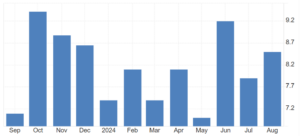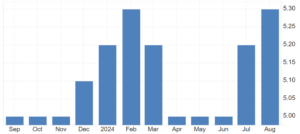
Unemployment remains a significant economic challenge for India, despite the government’s efforts to address it. The true extent of the problem is often underestimated due to flawed methodologies used by the government to calculate unemployment rates, says Prof Santosh Mehrotra. To better understand why India continues to face high unemployment and whether initiatives like the Pradhan Mantri Kaushal Vikas Yojana are effectively skilling the youth, Policy Circle reached out to Prof Mehrotra, a visiting professor at the Centre for Development, University of Bath, and an expert in labour, employment, and skill development.
In March 2023, the government announced that the unemployment rate had reached a five-year low. However, since its methods for calculating unemployment differ from international standards, these numbers can be disputed. The employment data generated by the government and the Reserve Bank of India are flawed and require reassessment, says Prof Mehrotra.
READ I Care-deficit nation: India’s care economy needs a reboot
Understanding unemployment in India
According to Prof Mehrotra, India’s unemployment problem is largely because the government is not prioritising it. “If the government does not recognise the problem, how can we expect it to be resolved,” Prof Mehrotra asks. By continuously saying that ‘all is well’, the government hinders the resolution of the unemployment crisis.
The organised sector is shedding jobs, while a new generation of job seekers — despite being better educated — often lacks practical work skills. As the economy recovers, these individuals may find themselves unqualified for available positions, leading to widespread unemployment, increased social inequality, and heightened conflict.
India unemployment rate (in %)

Even the initiatives aimed at skilling and upskilling individuals have not produced concrete results. The current approach is piecemeal; a mere three months of training through schemes like the Pradhan Mantri Kaushal Vikas Yojana cannot adequately equip a person. Most applicants for these schemes have only completed 10th to 12th grade and typically seek government jobs with just passing marks.
The educational level of the workforce in India is alarmingly low. The core issue lies in the quality of education, which falls significantly short compared with countries like China, Vietnam, and Indonesia. India must urgently address this crisis, especially given that its demographic dividend is at its peak. This demographic dividend occurs when the working-age population rises while the dependent population — those under 15 and over 60 — falls. It represents a golden opportunity for any nation, often occurring only once in a lifetime.
However, due to economic mismanagement since 2012, India’s labour force participation rate has been declining. The country cannot afford to miss out on this opportunity.
At the current rate, India is in danger of squandering its demographic dividend. Prof Mehrotra says that non-farm jobs are not growing at the same pace as the influx of young people into the labour force — a trend that has persisted since 2014. The creation of non-farm jobs has been hindered by a slowing economy. For a developing country like India, falling employment rates present a serious developmental issue, especially given the decline in labour force participation among women.
Lessons from China
To effectively tackle joblessness, India must learn from China which successfully developed labour-intensive manufacturing, and India can adopt a similar approach. The first step is to accurately identify the problem. There are numerous factors posing challenges. Since 1991, for nearly 30 years, India has lacked an explicit industrial policy. In contrast, East Asian countries, including China, have maintained robust industrial policies focused on manufacturing.
China unemployment rate (in %)

Because India has not established a clear manufacturing strategy, manufacturing has grown in absolute terms but has not become the leading sector of the economy. A leading sector typically grows faster than the overall economy, and as a result, manufacturing has not driven GDP growth in India as it has in East Asia. Notably, the share of manufacturing in India’s GDP is approximately 16-17%, the same figure recorded three decades ago in 1991. In simple terms, the percentage of manufacturing within the national output has stagnated over the past 30 years.
The lost opportunity in the manufacturing sector can be highlighted by China’s rise. Since the 1990s, China has become known as the world’s factory. In contrast, India’s manufacturing sector has experienced a decline in employment since 2012, despite initiatives like Make in India. The number of manufacturing jobs decreased by 3 million in the six years following 2012, marking a first for India.
This decline is particularly troubling in labour-intensive sectors such as textiles, garments, wood and furniture, food processing, and leather and footwear, which together account for half of total manufacturing employment. An unfavourable policy environment for these sectors has further contributed to the decline in manufacturing jobs. Currently, India’s manufacturing employment share is even lower than that of Bangladesh, which stands at 16%.
Anil Nair is Founder and Editor, Policy Circle.

